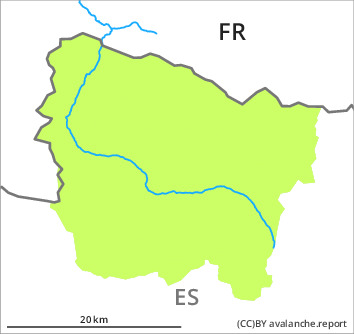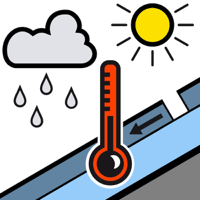
Danger level

Avalanche Problem

Wet snow



Moist snow slides as the day progresses.
As the day progresses as a consequence of warming during the day and solar radiation there will be a gradual increase in the danger of moist snow slides. Individual gliding avalanches can also occur. The avalanches are rather small. The avalanche prone locations are to be found on very steep grassy slopes and in steep rocky terrain.
Southern border of Aran: Wind slabs can be released in isolated cases on shady slopes above approximately 2500 m. The avalanches are only small.
Southern border of Aran: Wind slabs can be released in isolated cases on shady slopes above approximately 2500 m. The avalanches are only small.
Snowpack
>
Outgoing longwave radiation during the night will be quite good.
Sunny slopes and intermediate altitudes: The surface of the snowpack will freeze to form a strong crust and will soften during the day.
Shady slopes: The snowpack is well consolidated and its surface consists of loosely bonded snow lying on a melt-freeze crust that is strong in many cases.
Above approximately 2000 m there are 40 to 50 cm of snow. At low altitude from a snow sport perspective, in most cases insufficient snow is lying. During the day: There is a danger of falling on the icy crust.
Sunny slopes and intermediate altitudes: The surface of the snowpack will freeze to form a strong crust and will soften during the day.
Shady slopes: The snowpack is well consolidated and its surface consists of loosely bonded snow lying on a melt-freeze crust that is strong in many cases.
Above approximately 2000 m there are 40 to 50 cm of snow. At low altitude from a snow sport perspective, in most cases insufficient snow is lying. During the day: There is a danger of falling on the icy crust.
Tendency
Monday: Hardly any decrease in danger of moist avalanches as the temperature drops.